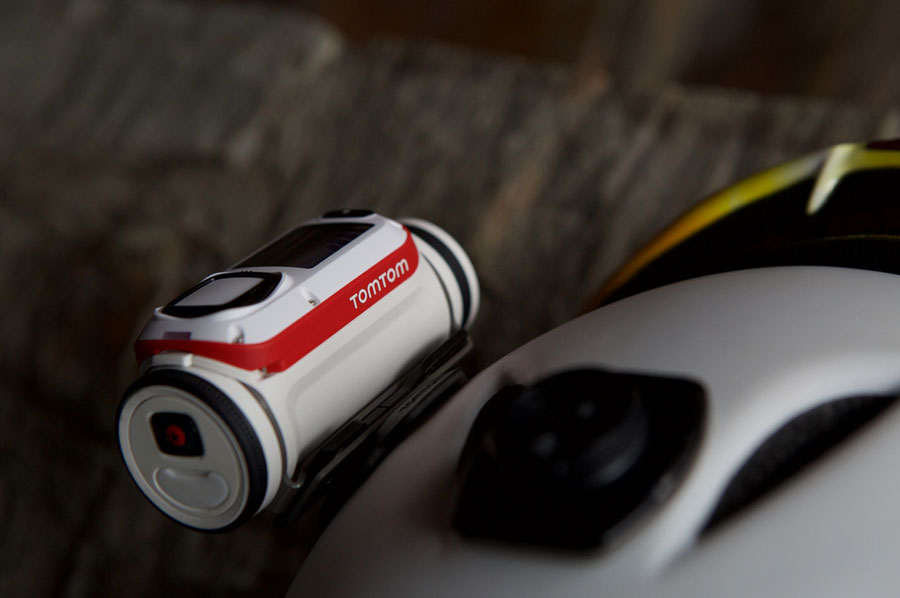
You may remember that, not so long ago, we told you that TomTom were dipping their toe into the action camera market.
To stand out in a market already dominated by GoPro, and with a whole host of other action cam manufacturers already established, the camera that TomTom are calling the Bandit had to be pretty special to survive. As such we were eager to get our hands on one.
So, that’s exactly what we did. Teaming up with the Dutch firm, Mpora headed to Tignes in France for some spring shredding, along with a bit of mountain biking thrown in to really put the Bandit – and us – through our paces.
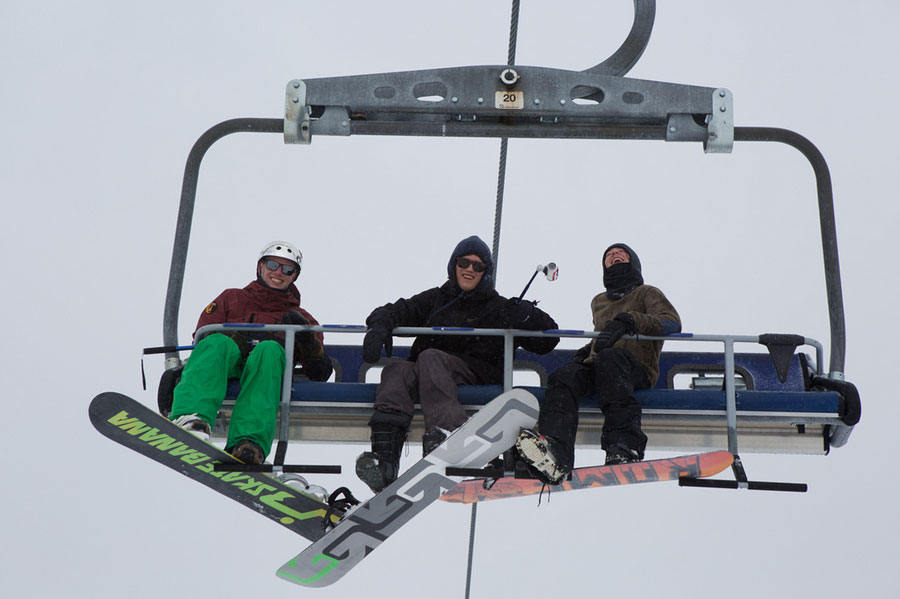
The first thing to strike you about the TomTom Bandit is its design. It looks good, and carries enough weight to assure you that it’s pretty sturdy.
That said, it’s light enough that, within 30 seconds or so of it being mounted on your helmet, you quite happily forget it’s there. As opposed to a rectangle that’s synonymous with GoPro, the Bandit is more of a tube – ideal for the Radical Unicorn look.
The design wasn’t perfect, however. The model we tried was white, which made it somewhat of a pain in the arse for somebody in the group who knocked their Bandit off their helmet into the snow.
Aside from a red stripe that runs around the camera, it’s almost perfectly camouflaged for winter conditions. Ideal if you’re in the SAS, but not so good if you lose your camera during your annual week in the Alps.
Colour aside though, the TomTom Bandit was clearly designed for ease of operation. There was little faff in using the camera.
A display on the top of the Bandit told you what shooting mode you were in, how much battery was left, and how much space remained on the card. The memory card is part of a unit called the Bat-stick, which despite sounding like a quickly scrapped Super Hero gadget, is actually a pretty smart innovation.
As well as containing the battery and the memory card, the stick has its own USB port, meaning you don’t need a cable to charge the camera or download footage.
Four directional buttons around the screen are used to change shooting mode, and bring up other functions on the camera, including connecting to a smart phone via wifi, but more on this later.
The menus proved easy to use and navigate while the camera was in Mpora’s hand, but when helmet mounted, things were trickier.
With more time spent with the camera, we’re sure it would become easy to learn how many presses in what direction change settings, but while we were still getting used to it, it proved problematic. Of course, wearing thick snowboarding gloves didn’t help.
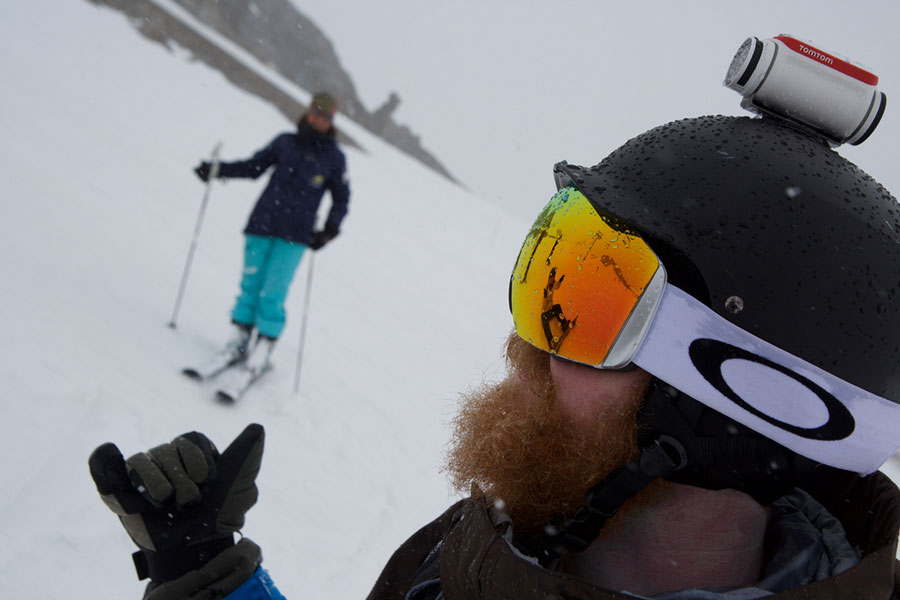
Much easier to use were the shooting buttons. Unlike on a GoPro, there isn’t just one button to start and stop recording. The start button sits on top of the Bandit, while the stop is on the back end. This takes away much of the anxiety of not knowing whether that last press turned your future masterpiece off or on.
On the hill, it was easy to forget the Bandit was there. The long battery life meant that filming could start before we got on the lift, and remain on throughout a full run.
In fact, this proved to be a good use of the Bandit as, being TomTom, it had a few clever GPS type tricks up its sleeve. During a run, the camera itself could detect what it perceived to be highlight moments on the run, and give them a little marker.
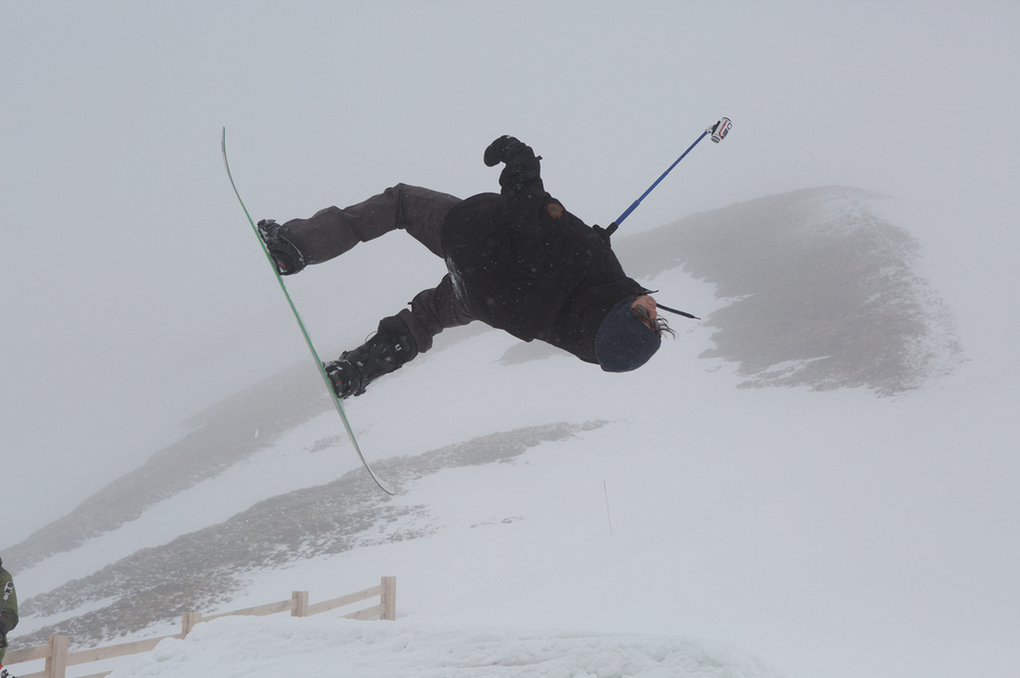
Whenever you start really charging, send it off a jump, rotate, flip, or change height drastically, the TomTom Bandit will detect this, and remember that particular bit of footage, creating markers along the way. Alternatively, you can press the start button on the camera again, and manually mark a highlight.
Far from just a novelty, it makes the editing process when you’re back in the chalet a lot easier. Instead of sitting through hours of footage from the day, when you could be in the bar enjoying a swift Kronenbourg, the highlights have already been selected for you.
The down side to this is that each highlight only lasts six seconds. This can mean that it can perfectly capture the run up and take-off of a hit. However, it cut the end if it thinks the change of speed at the start was the highlight, not the 1980 Quintuple Cork you’ve just nailed.
However, instead of using the highlights selected by the TomTom Bandit, you can simply use them as a guide, and extend the footage beyond six seconds. Or of course, if you’re so inclined, spend much longer editing hours of footage while the après gets going without you.
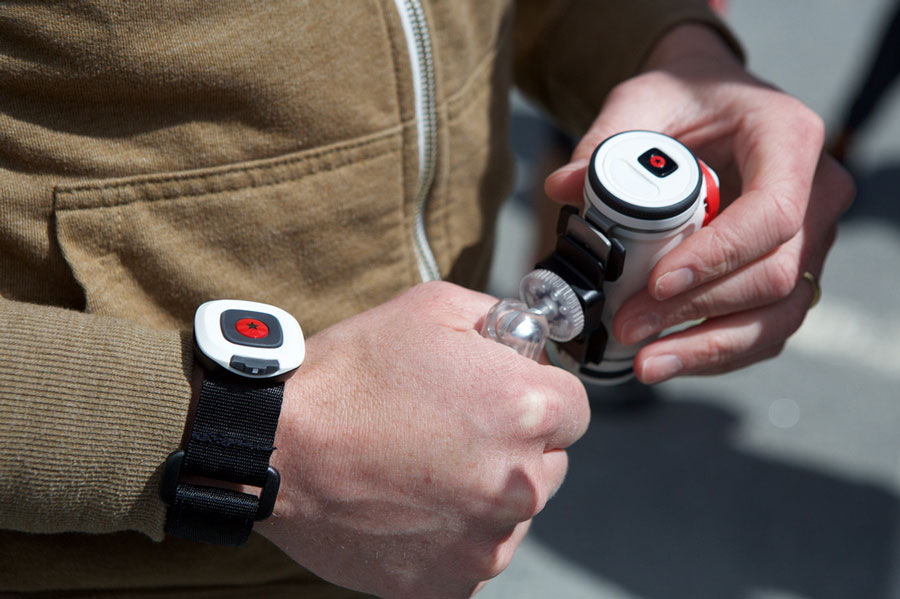
It’s editing where the Bandit comes into its own. It has an accompanying smartphone app that acts as a viewing and editing platform for your footage. Here you can go through and select your best clips of the day, cut them down, and piece them together into an edit.
Alternatively, you can let the app do all the work. With a simple shake, it’ll select a bunch of your highlights from the day and create an edit for you.
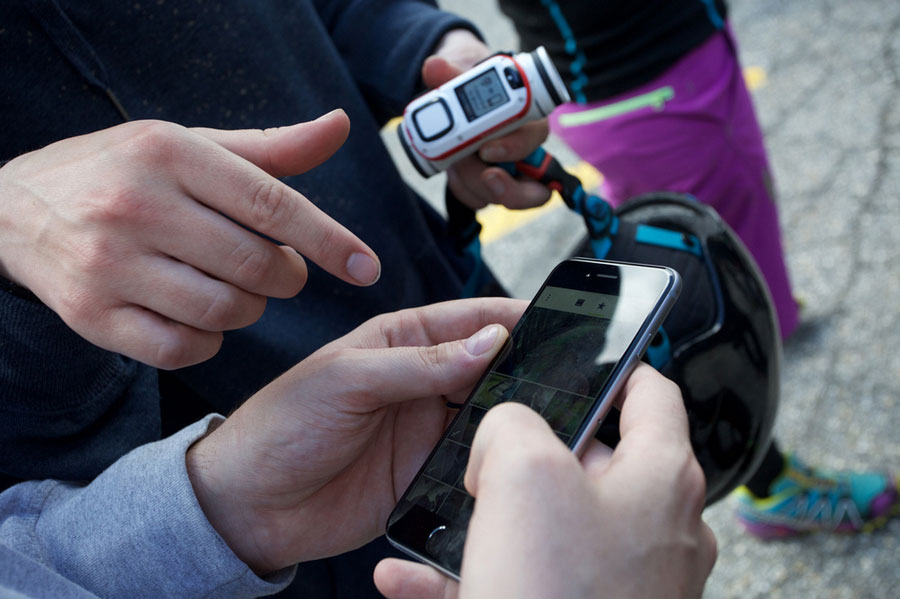
It’s a function that works surprisingly well. There was no delay or buffering time, and the edits, while sometimes a little random in chronology, were good.
The Shake To Edit feature maybe isn’t something more professional film crews would use, but for most people, it’s a good way of getting your daily edit put together quickly and with minimum hassle.
And, of course, you can still upload everything to your computer and use Premier Pro if you’re that guy.
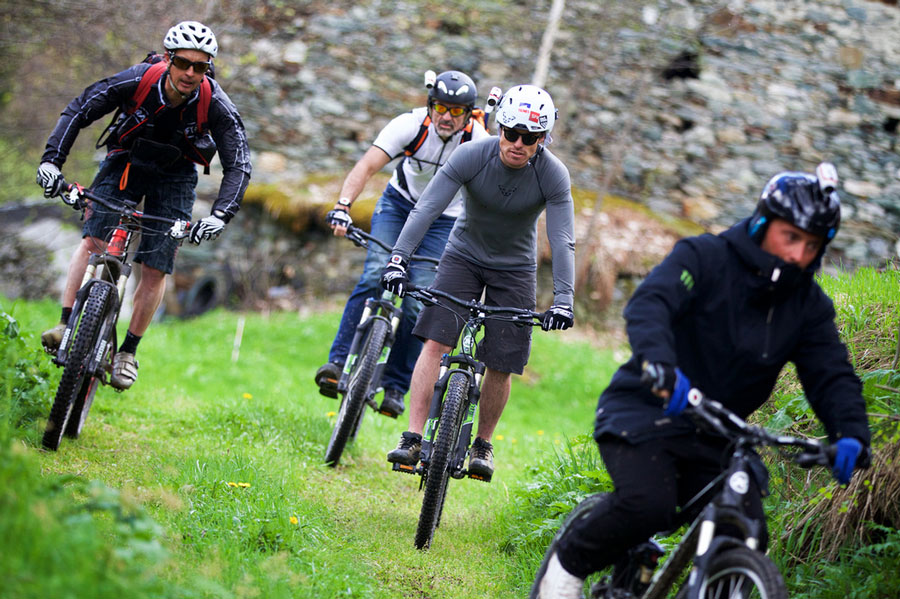
While the TomTom Bandit proves to be a solid piece of filming equipment for the every day rider, it could also have a place in a professional rider’s bag.
It may not film in the same high resolutions or super slo mo as the very top of the range GoPro, but the fact the camera can act as a media server in its own right means that, as soon as you’re near a wifi signal, you can get your footage on to your smart phone and get editing.
What does this mean in the real world? Well if you’re Billy Morgan and you’re racing with other snowboarders to nail the worlds first ever Quadcork 1800, you could get the trick done, filmed, and up on social media within minutes, not hours.
Given we live in a world where the mantra “if there’s no footage it didn’t happen” rules, for a pro in any sport this could be the difference between being the first person to land a brand new trick, or just being another also ran.
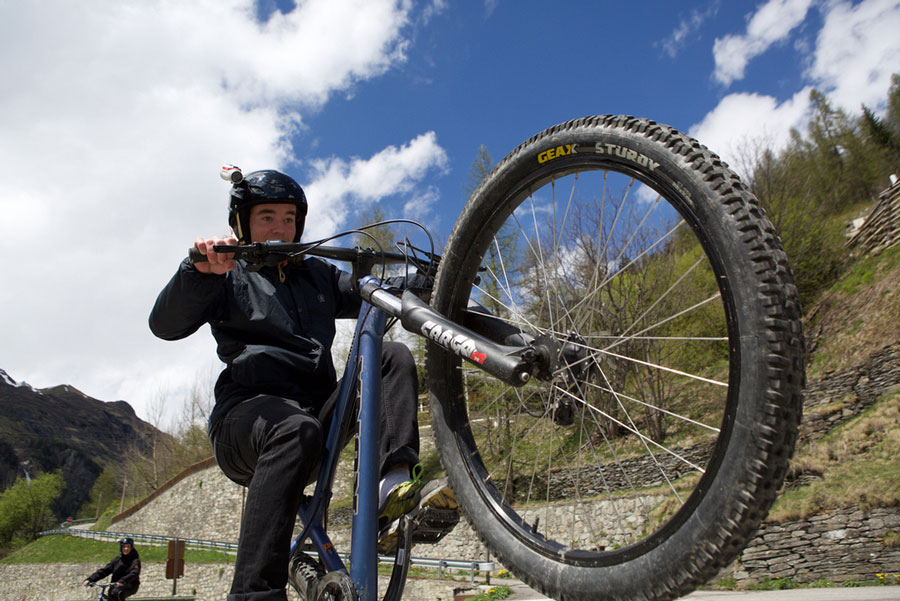
On both board and bike, the TomTom Bandit proved to be more than just another fish in the sea of action cameras. Its user friendly interface and easy editing software make it an excellent choice for anybody that wants a hassle free way to get their day of adrenaline up on social media for the world to see.
It also has practical uses for pro riders, who will be able to get their footage online before anybody else. And, of course, another action camera on the market is good news for us, the consumer. Competition keeps prices across the range down, and increases innovation within the companies making them.
The TomTom Bandit is due for release in June this year.
You may also like
Here’s The New Action Camera That Can Sense When You’re Sending It Big
If This Norwegian Snowboard Edit Was Anymore Punk, It Would Have A Face Tattoo And A Purple Mohawk